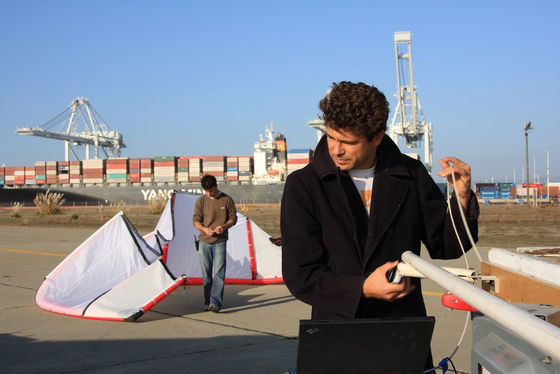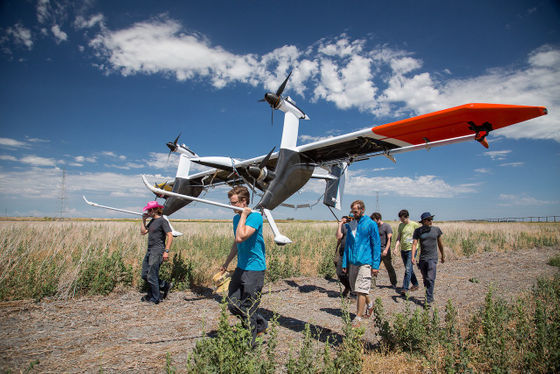`` Makani '' developing a flying wind generator announced that it will be independent of Google's parent company Alphabet

The clean energy company `` Makani '' acquired by Google for $ 15 million (about 1.8 billion yen) in 2013 has continued to develop the flying wind generator `` Energy Kite '' as an independent company under Alphabet, Google's parent company Was. However, on February 19, 2020, Makani announced that it would leave Alphabet.
A long and windy road-Makani Blog-Medium
The energy kite developed by Makani is a small airplane equipped with a wind power generator on the propeller part, and it uses the principle of kites to fly efficiently to altitudes of 250 m or more where the wind is strong and efficiently generate power I am. You can see what this energy kite really looks like by reading the following article.
What is the flying wind generator 'Makani' developed by Google? -GIGAZINE

Makani was founded in 2006 by kite surfers who want to generate wind power in more places and has been developing energy kites. In 2013, it was acquired by Google and incorporated into Google's secret research institution, Google X. In 2017, he reported that he had performed a flight test of a prototype machine `` M600 '' with a power generation capacity of 600 kilowatts and demonstrated its performance, and in 2019 it was connected to a floating platform installed at sea in Norway We published a movie that succeeded in a flight test of a practical size energy kite, and continued to appeal to progress.
In the following movie released by Makani in August 2019, you can see the state of the energy kite that generates power by flying in a circle on the ocean.
Makani's first offshore energy kite flight-YouTube
However, Makani announced that it will leave Google X in 2019 and enter into a partnership agreement with Dutch oil company Royal Dutch Shell as an independent company under Google's parent company, Alphabet . And on February 19, 2020, Makani reported that it was no longer under Alphabet.

`` Although there have been strong technological advances, commercializing an energy kite has been slower and more risky than expected, '' said Makani CEO Fort Felker. And comments. At the time of the announcement, Royal Dutch Shell was looking for ways to continue developing Makani.

Felker thanked those who supported Makani's efforts to harness wind energy and Makani employees who were passionate about developing energy kites. We need to look for new renewable energy technologies. We are proud of our team that has been dedicated to technologies that utilize renewable energy. '
Related Posts:






